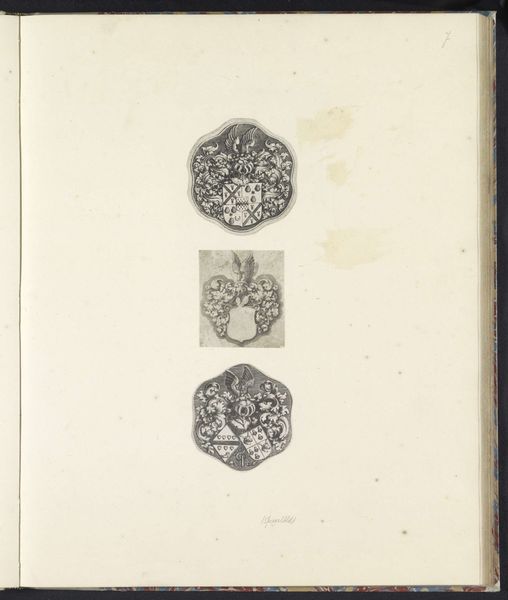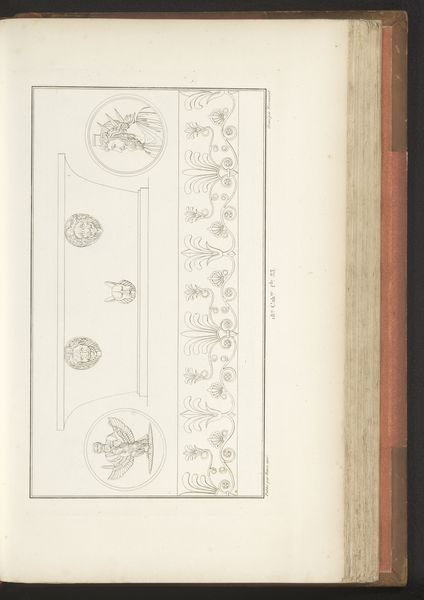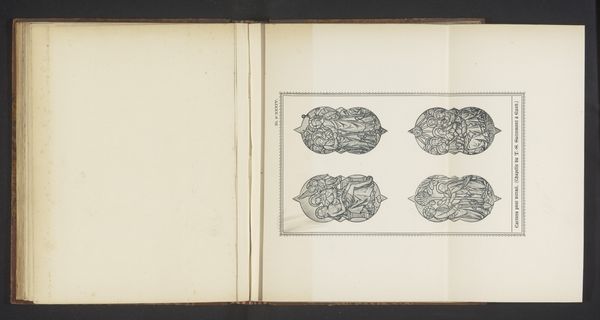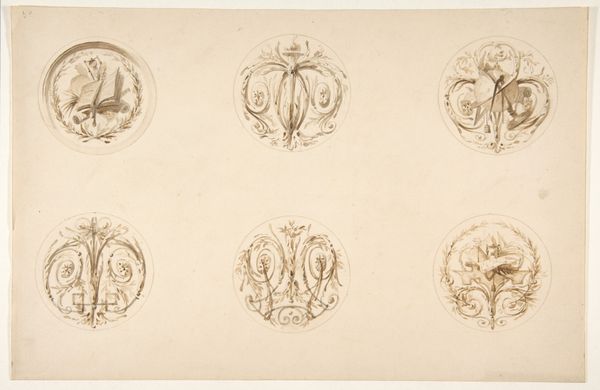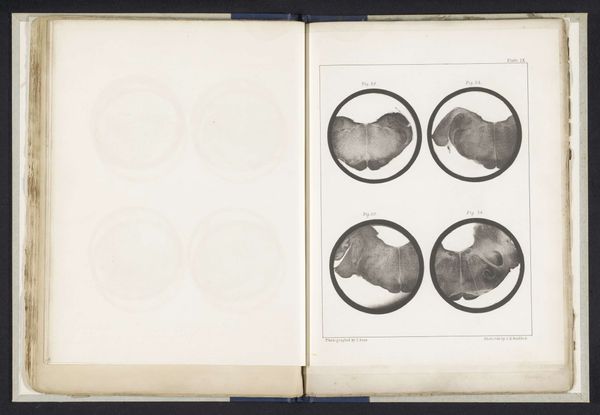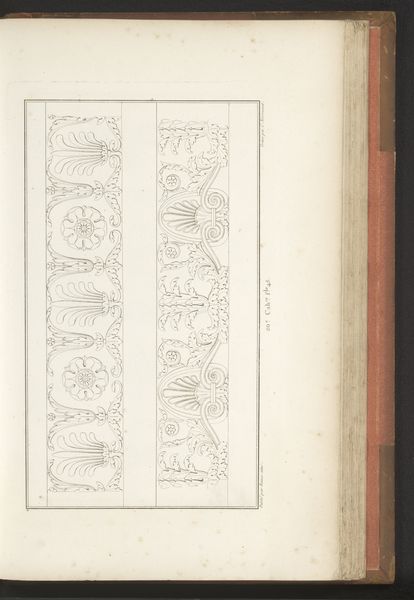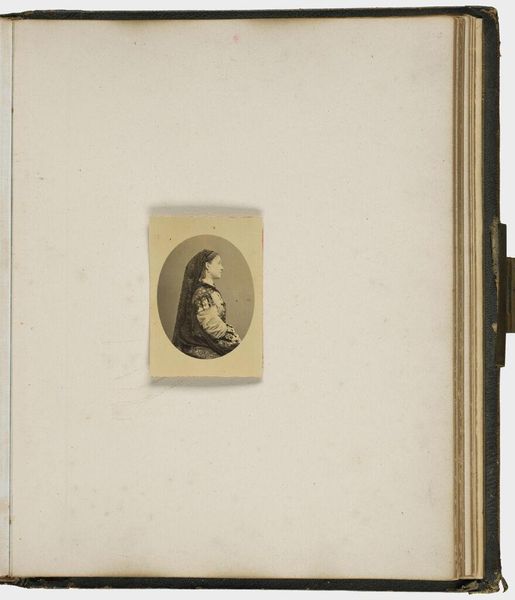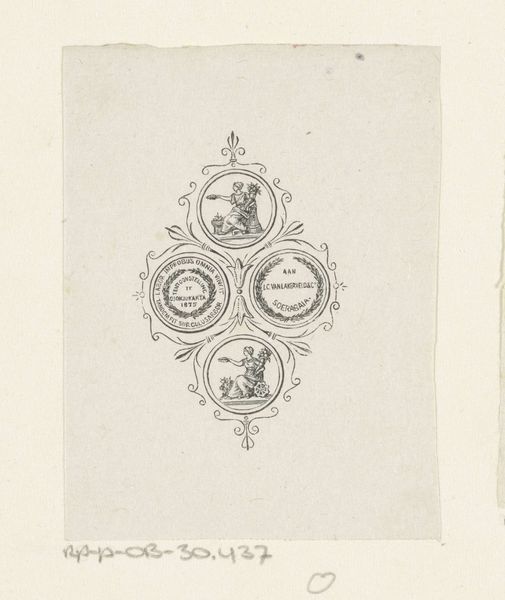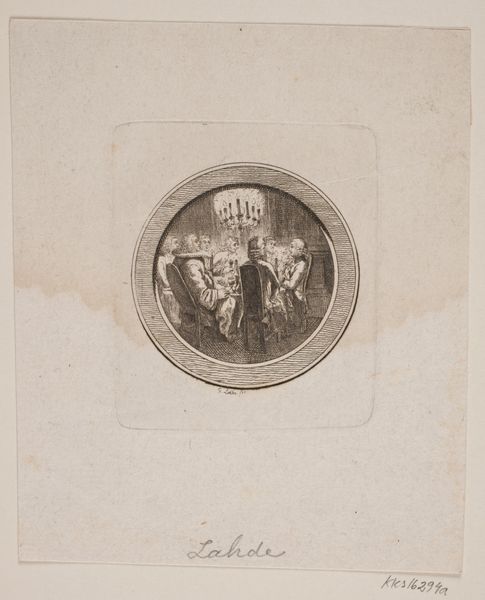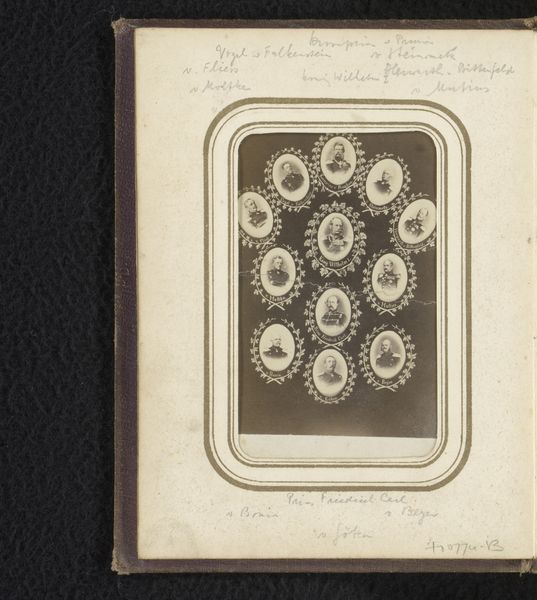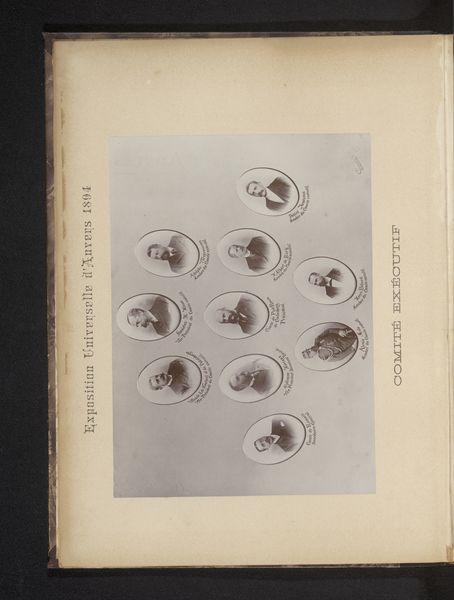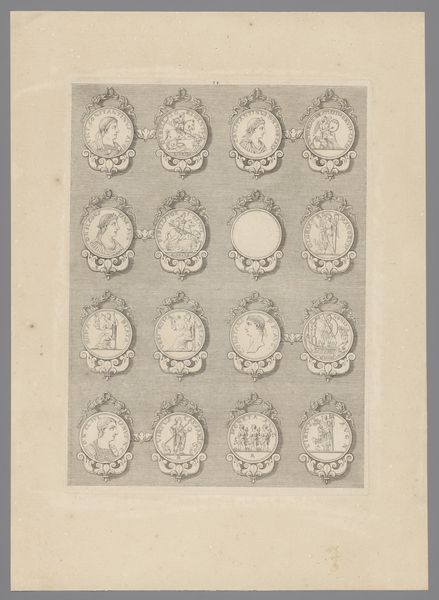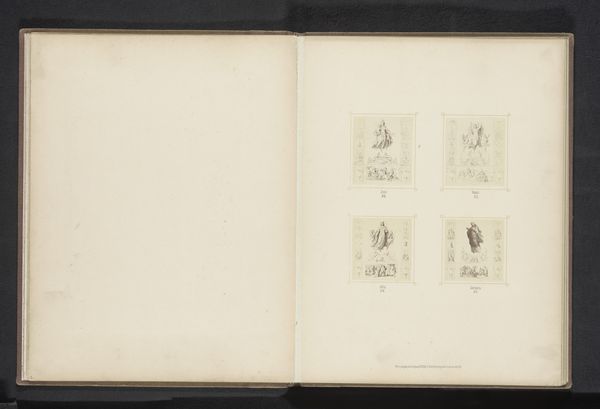
Fotocollage van 15 miniatuurportretten van keizer Napoleon III en de belangrijkste legerleiders met hun namen c. 1870
0:00
0:00
photography
#
medal
#
photography
#
history-painting
#
academic-art
Dimensions: height 91 mm, width 57 mm, height 101 mm, width 60 mm
Copyright: Rijks Museum: Open Domain
Curator: Editor: Here we have a photo collage from around 1870, presenting miniature portraits of Napoleon III and his military leaders. It strikes me as a very deliberate display of power through photographic reproduction. How do you read this piece? Curator: Well, let’s think about what photography meant at this time. This isn't just about depicting the elite; it’s about the *means* of depiction. Photography was becoming industrialized, a way to mass-produce images and disseminate them. So, how does that affect our understanding of power, authority, and image making itself? Editor: That's interesting. So, you’re saying the photographic process itself becomes a key part of understanding its message? Instead of only focusing on the sitters, consider the photographer’s labor. Curator: Precisely! The "academic art" style, as it’s tagged, attempts to elevate these men through a newly accessible medium. Consider also the social context – 1870, near the end of Napoleon III's reign. It’s a statement made at a very specific, perhaps precarious, moment in history. Why use a collage? Why group them? Editor: Perhaps to reinforce a sense of unity and strength when both may have been wavering? And choosing photography as the medium hints that these people can be, in a way, consumed like a product? Curator: Exactly. Think about the medals on their chests—symbols of status being mass produced, photographed, and consumed by the public. Now, what does that say about value and recognition during this era? Editor: That the value comes from how efficiently these products can circulate, and the more public visibility the higher is the power. It moves me to consider less on Napoleon's history, and focus more on understanding this visual method itself, using photos as "raw materials" for crafting ideas. Curator: I think we've moved away from hero worship and towards something much more critical, a consideration of how power is manufactured and maintained through the mechanics of representation. Editor: It changed my understanding on how much a medium choice impacts an artwork!
Comments
No comments
Be the first to comment and join the conversation on the ultimate creative platform.
